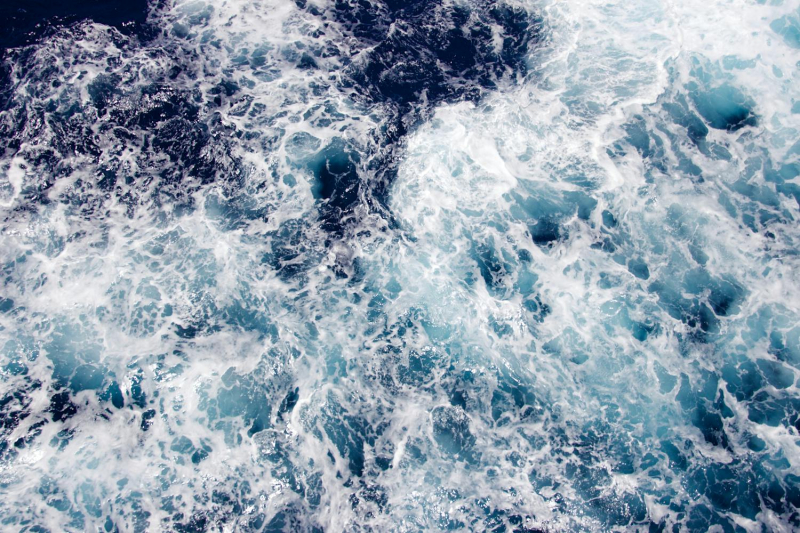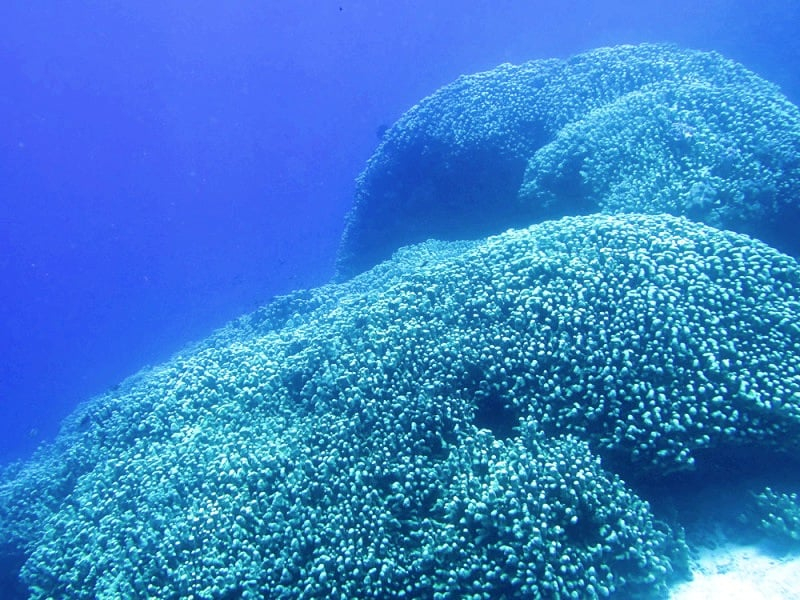
© Matthew Barra/Pexels
The team of National Geographic< /em> certainly did not expect such an encounter during their underwater exploration mission. In the crystal clear waters of the Solomon Islands (southeast of Papua New Guinea), aboard the oceanographic vessel Pristine Seas, scientists encountered an exceptional creature: a specimen of Pavona clavus , a species of coral, reaching the staggering dimensions of two basketball courts combined.
An extraordinary size
When the first echoes appeared on the Pristine Seas' sonars, the researchers initially thought they had spotted a sunken wreck. The surprise was total when the divers realized that it was a living organism, located approximately 13 meters deep. This aquatic behemoth displays exceptional measurements: 34 meters wide by 32 meters long, rising to 5.5 meters high with a circumference reaching 183 meters.
Underwater filmmaker Manu San Félix, an expert in tropical marine environments, was able to authenticate this structure as belonging to the species Pavona clavus, a hard coral characteristic of Indo-Pacific waters, but usually observed in much more modest forms.
This is all the more exceptional since corals, although they are builders of complex marine ecosystems, have intrinsic growth limits linked to their physiology and their mode of reproduction. Indeed, this is a very slow and progressive phenomenon, depending on a multitude of factors: water temperature, nutrient availability, exposure to sunlight, etc.
Coral species, even the most massive, generally do not exceed a few meters in diameter and colonies of several meters in diameter are already considered exceptional .

A “classic” reef of Pavona clavus of 20 meters in diameter. © Anne Hoggett/Wikipedia
A complex biological structure
Even more astonishing: unlike traditional coral reefs that form colonies composed of multiple organisms, this specimen is a unique biological entity. Its structure is based on a sophisticated network of billions of polyps, these tiny genetically identical marine animals that, together, have built this underwater cathedral over an estimated period of between 300 and 500 years.
This uninterrupted growth testifies to a remarkable resistance to the multiple environmental upheavals that have occurred since the 17th century. The shimmering hues of its structure – a subtle range of browns, reds, yellows and blues – shelter an ecosystem of exceptional richness.
200% Deposit Bonus up to €3,000 180% First Deposit Bonus up to $20,000Scientists have noticed, however, that this organism, although appearing healthy overall,already has damaged areas, particularly those located at lower depths. Like all corals, this one is very vulnerable to the deleterious effects of human activity and global warming, which increases the temperature of the oceans and acidifies the waters. For Molly Timmers, scientific director of the expedition, its discovery is nevertheless encouraging: “You have this pillar of life that is still there, it gives you this wonder, this hope. Just seeing its size – mega-coral – and the fact that it survives in an area that wasn’t particularly healthy ».
A giant among others
Pavona clavus is exceptional for its imposing size, but it is not the only living being on Earth with such dimensions. To put these dimensions into perspective, the largest living being in the world is Pando, a colony of aspen trees (Utah), which measures 43 hectares. This is not considered a forest in the strict sense, since it is composed of 47,000 trees, clones that have lived thanks to a single root system for nearly 80,000 years. Thus, this Pavona clavus is 3,359 times smaller than Pando in terms of surface area
On the plant side, the Posidonia australis, an aquatic species found in Shark Bay in Australia, holds the record for the largest plant in the world. It covers 200 km², the equivalent of 200,000 football fieldsand is therefore 238,095 times larger than Pavona clavus.
Nevertheless, this coral is a discovery of capital importance for the Prime Minister of the Solomon Islands, Jeremiah Manele. The economy of the archipelago is closely linked to the good health of coral ecosystems. Indeed, the latter serve as shelter and nurseries for many species of fish and thus constitute a fundamental food resource for the local populations. Fishing, whether artisanal or commercial, is a pillar of the Solomon Islands economy, and the state of the reefs directly affects fishing yields.
Seeing these reefs disappear would be catastrophic, because, in addition to ensuring the food supply of the inhabitants, they also protect the coastal areas from waves during storms and regulate the climate, the production of oxygen and the storage of carbon. Pavona clavus is no exception to this rule, and by its constitution, its genetic heritage could contain valuable information on the mechanisms of adaptation of corals to environmental changes. After all, it has survived centuries of human history without disappearing, so its DNA must contain some surprises that could help us better understand its extraordinary resilience.
- Scientists have discovered a giant coral Pavona clavus34 × 32 meters towards the Solomon Islands, unique in its size and biological structure.
- This “underwater cathedral” has grown over several centuries, demonstrating exceptional resilience in the face of climate change.
- Its preservation is essential for the local ecosystem and could reveal valuable secrets about how corals adapt to climate change.
📍 To never miss any Presse-citron news, follow us on Google News and WhatsApp.
[ ]

